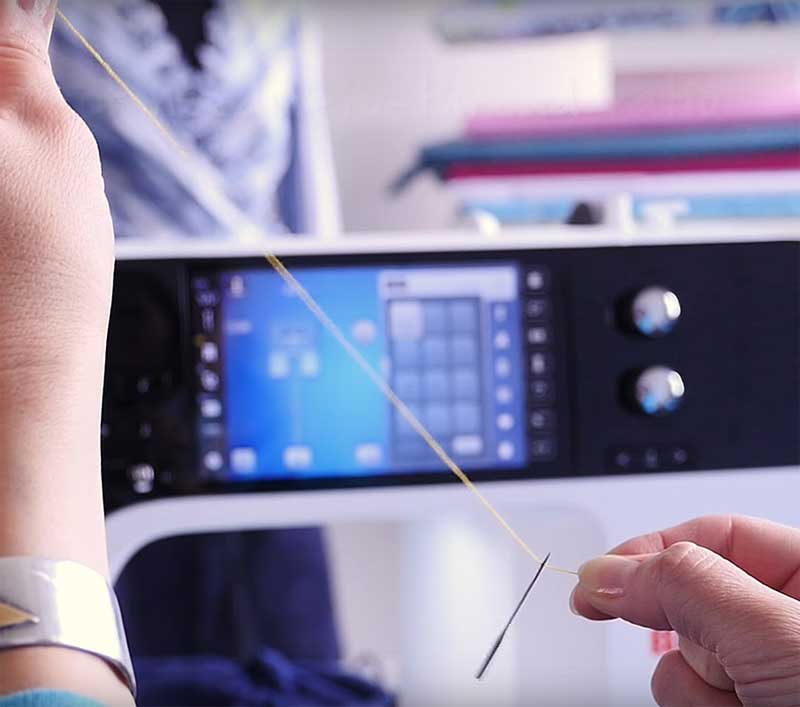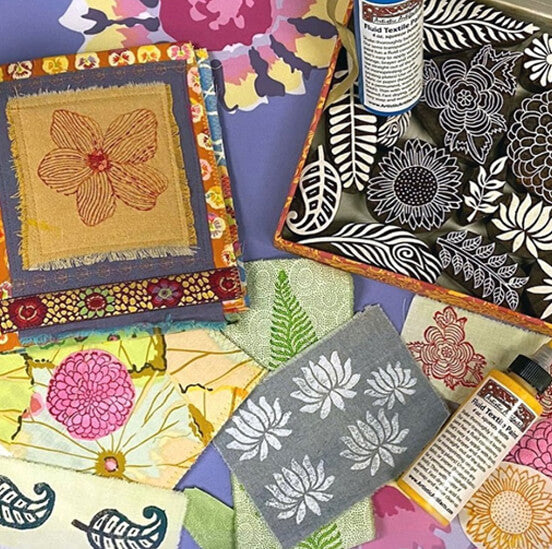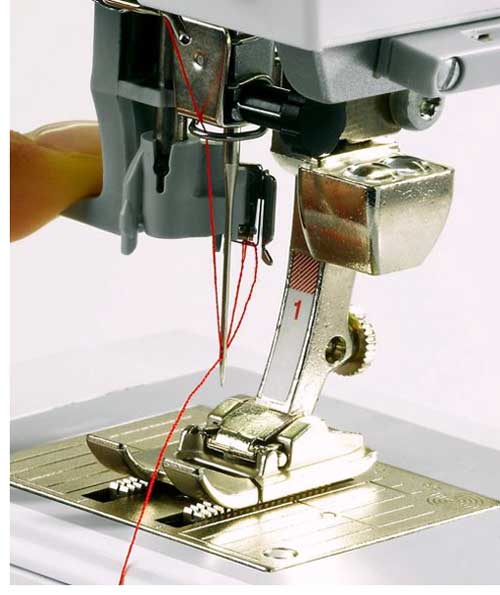Know Your Needles
We want to share the very informative “All About Sewing Machine Needles” from BERNINA’s we all sew blog. It begins by pointing out how impactful an object so small can be on a fiber project. “The right needle for your sewing project can create perfectly even and beautifully made stitches. The wrong needle (even a worn or damaged needle) can create all kinds of headaches — like skipped stitches, crooked stitches, frayed and broken threads, and holes or tears in your fabric.”
According to the history of sewing needles compiled by Schmetz Needles, the needle is one of the earliest tools developed by man. Hand needles have been in use for thousands of years, and with the advent of the industrial age, inventors worked to develop a machine. In 1755 a two-point needle was developed that in basic form is still used in modern industrial machines for certain uses. In 1790 the hook needle (or protruding) needle was invented, and again, hook needles are used in some embroidery and saddle-stitch machines. These developments led Balthasar Krems of Germany to move the needle’s close to the point in approximately 1800. Schmetz notes that this simple feature was a sensation at that time, and paved the way for the mechanization of sewing around the world.
A sewing machine needle is manufactured with very distinct areas:
- Shank (which seats into your sewing machine)
- Shaft (tapers down from the shank)
- Groove (runs in the front of the needle to the eye)
- Eye (where the thread passes from the front to the back)
- Scarf (located on the back of the needle, a smooth indentation behind the eye)
- Point (the first part of the needle to penetrate the fabric; different points are engineered to work best with specific fabrics)
The diagram right is from Know Your Needles: A Carry-Along Guide for Choosing Hand and Machine Needles, authored by Liz Kettle of Textile Evolution (more about Liz below). This pocket/purse size guide, 4 in. x 6 in., is a complete reference tool to 30 of the most commonly used needles — both machine and hand needles — and the tasks they perform. This is an invaluable resource to any fiber artist, and handy to keep on hand as you shop for needles.
Remember that sewing machine needles do not last forever. Many consider that as a rule needles should be replaced after 4-8 hours of stitching, and/or at the beginning of each sewing project. BERNINA notes that if you experience skipped stitches, or hear “a pop, pop, pop sound (some people say it’s a whoop, whoop, whoop, or like a knocking sound) when the needle penetrates the fabric, it’s time to load a fresh needle.”
BERNINA’s blog points that the high speed of sewing, with the needle point moving rapidly up and down, means it’s important to “choose the right needle/thread ratio. The thread should pass smoothly and snugly through the eye of the needle. If the thread is too tight in the needle, or very loose, it can create problems when stitching.” BERNINA offers the following tip, pictured below, to help you determine if you have the correct needle to thread ratio:
 Before you insert a sewing machine needle into your machine, “pass it through a length of thread you have selected to sew your project. Hold the thread tightly at a 45° angle with the needle at the top, and let the needle slide down the thread. It should slide steadily down the thread. If the needle hops, skips, or gets stuck on the thread, the needle is too small for the thread you have selected. Move up one needle size and try the test again.”
Before you insert a sewing machine needle into your machine, “pass it through a length of thread you have selected to sew your project. Hold the thread tightly at a 45° angle with the needle at the top, and let the needle slide down the thread. It should slide steadily down the thread. If the needle hops, skips, or gets stuck on the thread, the needle is too small for the thread you have selected. Move up one needle size and try the test again.”
Visit the “All About Sewing Machine Needles” posting to learn more about:
- Needle Sizing (describing the European and American size sizing system and basic needle sizes)
- Sewing Machine Needle Types
- Worn and Damaged Needles (with another handy test for you to determine if your needle is damaged)
The below video tutorial by BERNINA will educate you on the many BERNINA sewing and embroidery needles, and how and when to use them correctly for perfect results.
Learn from Liz at Artistic Artifacts this June!
Liz Kettle from Monument, CO is a fabric and mixed media artist with a passion for teaching others the joy of making art and the creative process. Liz will be visiting Artistic Artifacts June 15-18 for a wonderful 4-Day Creative Retreat: Stitch Journeys — Your Guide to Amazing Stitching. Don’t miss this rare East Coast opportunity to learn from Liz... this retreat is suitable even for beginners, and a high-end sewing machine isn’t a requirement. Liz will teach you the tricks of using all of the unusual/specialty threads out there (such as the beautiful metallics from WonderFil Specialty Threads). Gain mastery of your machine, adjust tension settings, sew from the bobbin and much more as you develop the confidence to sew with any thread. Register now — this retreat is limited to just 20 students!










Leave a comment